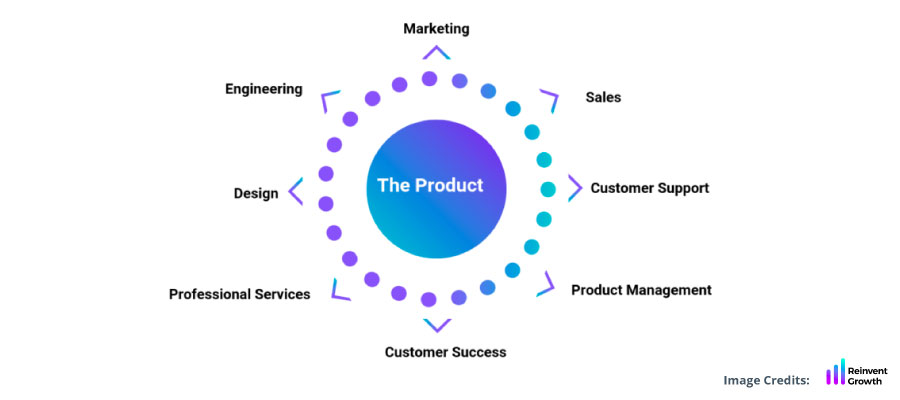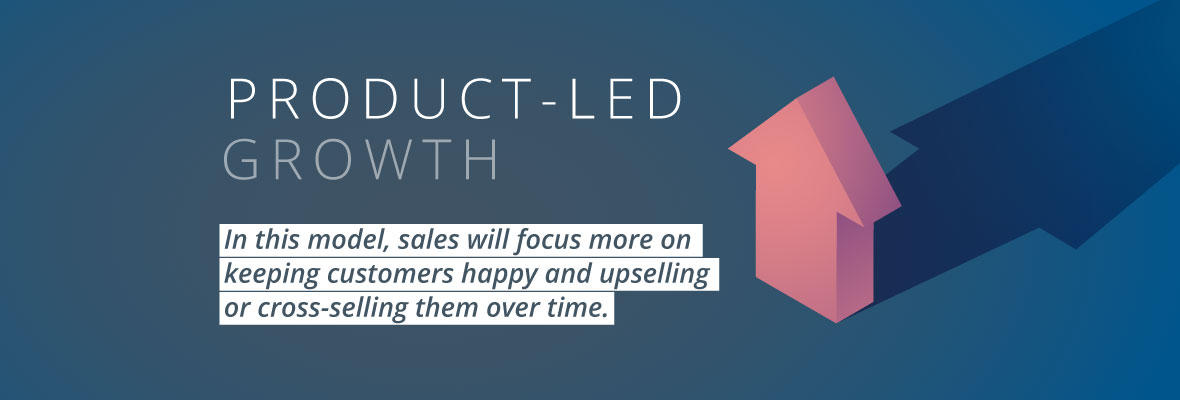This article originally appeared in Software Business Growth. This is part 2 in a two-part series on product-led growth strategies for B2B software providers. You can find part 1 here.
Product-led growth has become a popular go-to-market strategy in the digital age. In its superlative form, everything a company does from marketing, sales, operations, development and support is driven by and through the product. The goals are to make products easier to acquire, onboard, use and achieve quick time to value.
The product-led growth market strategy revolves around the user and is best geared toward engaging with smaller accounts rather than large enterprise companies.
This bottom-up approach requires repurposing of the workforce in several core areas:
Product: Products must be designed and/or segmented into small modules that are appropriate for free trials and “land and expand” customer acquisition. The focus of the new user experience in a free trial or freemium model should not be to provide them a harbor tour of all your product’s capabilities. Instead, the product team should become maniacal on accelerating the user’s time to value for the job or task they are looking to solve within the product. For the product manager, this means understanding what value metric is king. In an ecommerce application, this might be the average time to find the desired product online or the window of time from order to receipt. Optimizing, accelerating, or eliminating the “in-between” steps should be the focus of all product teams looking to adopt a product-led model.
The product team should become maniacal on accelerating the user’s time to value for the job or task they are looking to solve within the product”.
Development/engineering: Delivering a modular product and brilliant UI/UX for users demands a smaller, more iterative software release strategy. In a product-led model, customer feedback will be abundant and ensuring that your software can meet the needs of users is critical. Smaller, more frequent updates to product means that development teams will need a highly agile process centered around CI/CD tools and processes. Dev teams are also tasked with digitizing the POV, demo, and procurement/acquisition processes – moving to a self-serve, web-based environment. Designing freemium and free-trial products also requires an effortless onboarding process.
Sales: The sales force in product-led companies moves from being primarily account closers to being account managers. Although there still might be strategic sales teams focused on larger/ strategic accounts, the primary growth vehicle will come through the product and organic growth. With a product-led growth strategy, sales teams with a large enterprise sales organization will find their teams mainly focused on closing the deal after the user has seen value with the free-trial or freemium product. This means that the countless demos and prolonged “proof-of-concepts” convincing executives of the value will be significantly reduced or eliminated. In this model, sales will focus more on keeping customers happy and upselling or cross-selling them over time. In some companies, the need for a BDR or inside sales team will go away.
Marketing: In a product-led company, marketing organizations will need to work hand-in-hand with sales and product like never before. These teams may now share responsibility for lead generation and classifying them into MQLs or SQLs. Efforts should combine on identifying how to reach potential prospects/users online with a focus on viral or influencer marketing and engaging in relevant tech communities, rather than traditional lead generation tactics such as sending emails, analyst reports, and white papers. Equally important is customer satisfaction: delivering in-app tips and tutorials to help users get more out of the product and increase their engagement.
 Conclusion: Transitioning to a product-led growth model requires a lot more than changes to the product. You will need discipline across the entire organization and a keen understanding of who the target persona is, and the value they are looking to receive. Employees not accustomed to that level of focus may question if the product is not broad enough, or if the total addressable market is now smaller. This is a natural line of reasoning, especially if the product being transformed into this model is extremely broad and wide-ranging in functionality.
Conclusion: Transitioning to a product-led growth model requires a lot more than changes to the product. You will need discipline across the entire organization and a keen understanding of who the target persona is, and the value they are looking to receive. Employees not accustomed to that level of focus may question if the product is not broad enough, or if the total addressable market is now smaller. This is a natural line of reasoning, especially if the product being transformed into this model is extremely broad and wide-ranging in functionality.
Ultimately, the answer to these questions will depend on the product strategy and the company’s vision. A strong leader will be able to navigate the internal disruption this new approach will entail and quell concerns among the troops regarding the potential risks. When transitioning to a product-led model, it’s important to ensure that communication and transparency are the guiding principles of the initiative. This way, everyone is prepared for the changes affecting their team and can see the longer-term benefits of delivering a customer-centric experience to acquiring software products.
Next Steps:
- The Rise of Product-Led Growth
- Lessons Learned in CI/CD Transformation
- Learn about the OpsRamp Platform






